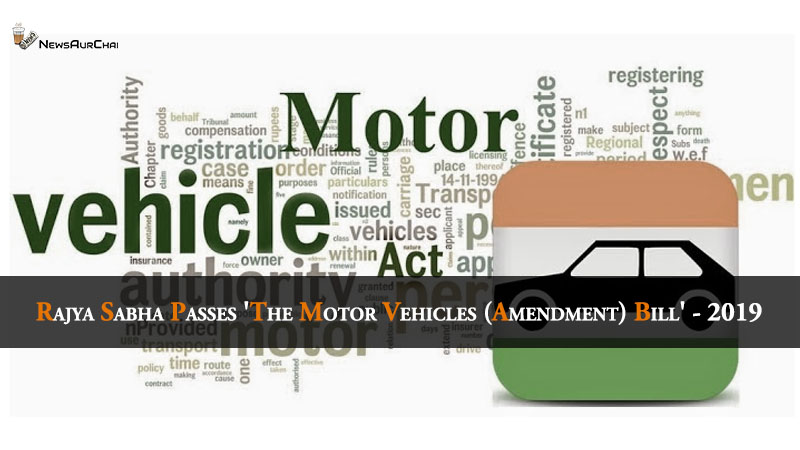
The Rajya Sabha passed ‘The Motor Vehicles (Amendment) Bill’ on Wednesday (31st July 2019). The existing law is 30 years old, and the penalities regarding traffic violation are very low. This Bill will help to instil the fear of law and thereby follow it.
Primary Focus Points of the Amendment
- To improve road safety
- Ease citizens in their dealings with transport departments
- To strengthen rural transport
- Public transport and last-mile connectivity through automation
- Computerisation and online services
The Lok Sabha had previously passed the Bill on 23rd July 2019. The legislation was already introduced in 2017, but couldn’t pass the Rajya Sabha and ceased with the dismissal of the 16th Lok Sabha.
Important areas of Amendment:
-
Revised Penalties: The Bill proposes a multi-fold increase in the punishment concerning a traffic offence. Every year the Penalty regarding motor vehicles will be increased by 10%. By increasing the penalties, the government aims to act as a restraint against traffic violations.
- Protection of good samaritans: The person who gives emergency help to the victim of an accident will be protected from all form of harassment. The aim is to ensure that the victim receives proper medical support during ‘golden hours’.
- Third-Party Insurance: A ten-fold increase in insurance compensation, from Rs 50,000 to Rs 5 lakh, with a simplified claiming process is proposed. Insurance firms will have to clear claims within a month. The minimum compensation for victims with severe injuries is increased from Rs 12,500 to Rs 50,000. In case of death, the representatives of persons will be compensated with Rs 2 lakh instead of Rs. 25,000.
- Motor Vehicle Accident Refund: The proposal requires the government to constitute a Motor Vehicle Accident Fund that insures all road users in India. This fund will be utilised for: (a) Treatment of road accident victims in the golden hour (b) Compensation of persons injured in a hit-and-run accident (C) Compensation to representatives of a victim killed.
- Driving licence and training: Aadhar card to be used as a mandatory identity proof for driving licence. The Bill proposes to computerise the process of driving test to avoid fake permits and ill-qualified drivers. More driving training schools and vehicle fitness centres to be opened.
- Recall of Vehicles: The Bill allows the government to recall the vehicles posing a threat to the driver or other road users or the environment. The manufacturer of the recalled vehicle will either have to reimburse the buyers with the full cost of the vehicle or replace the defective vehicle with similar or better specifications.
- Road Safety Board: The Bill proposes to establish a Road Safety Board to advice central and state government regarding all road safety issues. The board will also be responsible for the promotion of new technologies.
Apart from this, the Bill also amends the process of vehicle registration to reduce corruption at the RTO. The road contractors will be fined up to Rs 1 lakh if they fail to follow road standards. The Bill also will help the government to frame rules to regulate the Ola and Uber services. Currently, many states lack regulations to control these app-based cab services.
Why a Motor Vehicle Amendment?
For the past five year ministry of transport and highways had been struggled to reduce the number of road accidents. It was stated that India ranked top in death by road accidents.
According to a report by the government, the death caused by road accidents has increased dramatically. Among vehicle categories involved in road accidents, two-wheelers accounted for the highest share (33.9%) in total accidents and fatalities (29.8%) in 2017. Light vehicles comprising cars, jeeps and taxis as a category constituted 24.5 per cent in total crashes and 21.1 per cent in fatalities.
The Union Minister of Road Transport & Highways and MSME, Nitin Gadkari stated that the Bill would not invade the power and authorities of the states instead would improve it.
With all these said, we have to now look forward to how far this will be implemented and how much difference it will make in the traffic violation in India.





